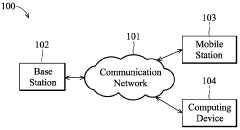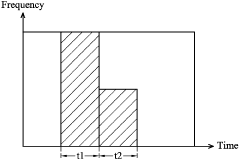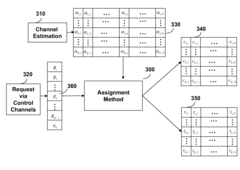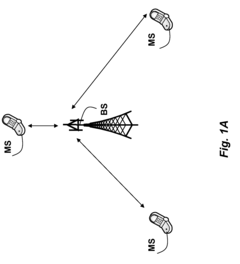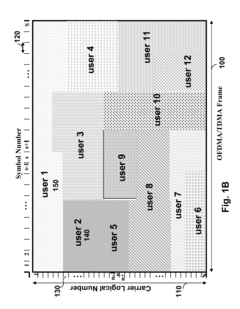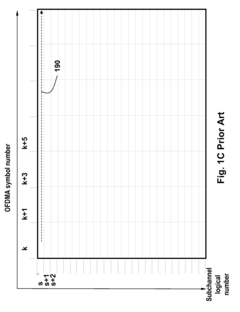OFDM Vs TDMA: Which Is More Cost-Effective in Deployment?
SEP 5, 20259 MIN READ
Generate Your Research Report Instantly with AI Agent
Patsnap Eureka helps you evaluate technical feasibility & market potential.
OFDM and TDMA Technology Evolution and Objectives
The evolution of wireless communication technologies has been marked by significant advancements in multiple access techniques, with TDMA (Time Division Multiple Access) and OFDM (Orthogonal Frequency Division Multiplexing) representing two pivotal developments in this trajectory. TDMA emerged in the second generation (2G) of mobile communications as a digital technology that divided a single frequency channel into time slots, allowing multiple users to share the same frequency band.
OFDM, on the other hand, gained prominence in the late 1990s and early 2000s as a sophisticated modulation technique that divides a channel into multiple orthogonal sub-carriers. This technology has become fundamental to modern wireless standards including 4G LTE, 5G, and Wi-Fi, offering superior spectral efficiency and resilience against multipath interference.
The technical evolution of TDMA began with its implementation in GSM networks, where it enabled digital voice transmission by allocating specific time slots to different users. This represented a significant improvement over analog systems, increasing capacity and enabling features like SMS. TDMA's evolution continued with enhanced data rates through EDGE technology, though its inherent limitations in spectrum efficiency eventually led to its gradual replacement.
OFDM's development path has been more recent and rapid, evolving from theoretical concepts to practical implementations in wireless broadband systems. Its ability to efficiently utilize spectrum through parallel data transmission and its robustness against frequency-selective fading have made it increasingly dominant in high-speed wireless communications. The technology has continuously evolved with advancements in signal processing, channel coding, and MIMO integration.
The primary objective of both technologies is to maximize the efficient use of available spectrum while providing reliable communication services. However, they approach this goal differently: TDMA aims to optimize temporal resource allocation, while OFDM focuses on frequency domain optimization through orthogonal subcarriers.
In contemporary wireless networks, the technical objectives have expanded to include higher data rates, lower latency, improved energy efficiency, and support for massive device connectivity. OFDM has demonstrated superior adaptability to these evolving requirements, particularly in high-bandwidth applications and challenging propagation environments.
The ongoing evolution of these technologies is now directed toward addressing the demands of next-generation wireless systems, including enhanced mobile broadband, ultra-reliable low-latency communications, and massive machine-type communications. This evolution is characterized by increasing sophistication in resource allocation, interference management, and integration with advanced antenna technologies.
OFDM, on the other hand, gained prominence in the late 1990s and early 2000s as a sophisticated modulation technique that divides a channel into multiple orthogonal sub-carriers. This technology has become fundamental to modern wireless standards including 4G LTE, 5G, and Wi-Fi, offering superior spectral efficiency and resilience against multipath interference.
The technical evolution of TDMA began with its implementation in GSM networks, where it enabled digital voice transmission by allocating specific time slots to different users. This represented a significant improvement over analog systems, increasing capacity and enabling features like SMS. TDMA's evolution continued with enhanced data rates through EDGE technology, though its inherent limitations in spectrum efficiency eventually led to its gradual replacement.
OFDM's development path has been more recent and rapid, evolving from theoretical concepts to practical implementations in wireless broadband systems. Its ability to efficiently utilize spectrum through parallel data transmission and its robustness against frequency-selective fading have made it increasingly dominant in high-speed wireless communications. The technology has continuously evolved with advancements in signal processing, channel coding, and MIMO integration.
The primary objective of both technologies is to maximize the efficient use of available spectrum while providing reliable communication services. However, they approach this goal differently: TDMA aims to optimize temporal resource allocation, while OFDM focuses on frequency domain optimization through orthogonal subcarriers.
In contemporary wireless networks, the technical objectives have expanded to include higher data rates, lower latency, improved energy efficiency, and support for massive device connectivity. OFDM has demonstrated superior adaptability to these evolving requirements, particularly in high-bandwidth applications and challenging propagation environments.
The ongoing evolution of these technologies is now directed toward addressing the demands of next-generation wireless systems, including enhanced mobile broadband, ultra-reliable low-latency communications, and massive machine-type communications. This evolution is characterized by increasing sophistication in resource allocation, interference management, and integration with advanced antenna technologies.
Market Demand Analysis for Wireless Communication Technologies
The wireless communication market has witnessed a significant surge in demand over the past decade, driven primarily by the exponential growth in mobile data traffic and the proliferation of connected devices. According to industry reports, global mobile data traffic is expected to reach 77 exabytes per month by 2022, representing a compound annual growth rate of 46% from 2017. This explosive growth necessitates more efficient spectrum utilization technologies, making the choice between OFDM and TDMA increasingly critical for network operators.
Consumer expectations for faster data speeds and lower latency have become paramount market drivers. The average smartphone user now consumes over 11GB of data monthly, a figure that continues to rise with the adoption of video streaming, cloud gaming, and augmented reality applications. These bandwidth-intensive applications create substantial pressure on existing network infrastructure, compelling service providers to evaluate cost-effective deployment strategies.
Enterprise sectors present another significant market segment with distinct requirements. Industries such as manufacturing, healthcare, and transportation increasingly rely on wireless technologies for mission-critical applications. These sectors often prioritize reliability and deterministic performance over raw speed, potentially influencing the OFDM versus TDMA deployment decision based on specific use case requirements.
Geographic market analysis reveals varying adoption patterns. Developed markets typically focus on maximizing data throughput in densely populated areas, where OFDM's spectral efficiency advantages may prove valuable. Conversely, emerging markets often prioritize coverage and cost-effectiveness, potentially favoring simpler TDMA implementations in certain scenarios.
The Internet of Things (IoT) represents a rapidly expanding market segment with projected connections exceeding 25 billion by 2025. IoT applications present unique challenges, requiring wireless technologies that can efficiently support massive numbers of low-power devices. This market segment has distinct requirements regarding power consumption, range, and connection density that significantly impact the OFDM versus TDMA deployment calculus.
Regulatory factors also shape market demand patterns. Spectrum allocation policies vary significantly across regions, with some markets facing severe spectrum constraints that necessitate highly efficient modulation schemes. Additionally, regulatory requirements for quality of service, emergency communications, and rural coverage obligations influence technology deployment decisions.
Market research indicates that total cost of ownership (TCO) has become the predominant factor in network technology selection. While equipment costs remain important, operators increasingly evaluate technologies based on spectrum efficiency, energy consumption, maintenance requirements, and upgrade pathways. This holistic approach to cost assessment is reshaping how operators evaluate the OFDM versus TDMA decision across different deployment scenarios and market segments.
Consumer expectations for faster data speeds and lower latency have become paramount market drivers. The average smartphone user now consumes over 11GB of data monthly, a figure that continues to rise with the adoption of video streaming, cloud gaming, and augmented reality applications. These bandwidth-intensive applications create substantial pressure on existing network infrastructure, compelling service providers to evaluate cost-effective deployment strategies.
Enterprise sectors present another significant market segment with distinct requirements. Industries such as manufacturing, healthcare, and transportation increasingly rely on wireless technologies for mission-critical applications. These sectors often prioritize reliability and deterministic performance over raw speed, potentially influencing the OFDM versus TDMA deployment decision based on specific use case requirements.
Geographic market analysis reveals varying adoption patterns. Developed markets typically focus on maximizing data throughput in densely populated areas, where OFDM's spectral efficiency advantages may prove valuable. Conversely, emerging markets often prioritize coverage and cost-effectiveness, potentially favoring simpler TDMA implementations in certain scenarios.
The Internet of Things (IoT) represents a rapidly expanding market segment with projected connections exceeding 25 billion by 2025. IoT applications present unique challenges, requiring wireless technologies that can efficiently support massive numbers of low-power devices. This market segment has distinct requirements regarding power consumption, range, and connection density that significantly impact the OFDM versus TDMA deployment calculus.
Regulatory factors also shape market demand patterns. Spectrum allocation policies vary significantly across regions, with some markets facing severe spectrum constraints that necessitate highly efficient modulation schemes. Additionally, regulatory requirements for quality of service, emergency communications, and rural coverage obligations influence technology deployment decisions.
Market research indicates that total cost of ownership (TCO) has become the predominant factor in network technology selection. While equipment costs remain important, operators increasingly evaluate technologies based on spectrum efficiency, energy consumption, maintenance requirements, and upgrade pathways. This holistic approach to cost assessment is reshaping how operators evaluate the OFDM versus TDMA decision across different deployment scenarios and market segments.
Current Implementation Challenges of OFDM and TDMA
Despite the theoretical advantages of both OFDM and TDMA technologies, their practical implementation faces several significant challenges that impact deployment cost-effectiveness. OFDM systems require precise synchronization and suffer from high Peak-to-Average Power Ratio (PAPR), necessitating more expensive power amplifiers with greater linearity. This requirement increases both hardware costs and power consumption, particularly challenging for battery-powered devices and large-scale deployments.
OFDM implementations also demand complex signal processing capabilities, requiring more sophisticated Digital Signal Processors (DSPs) and Field-Programmable Gate Arrays (FPGAs). These components not only increase the bill of materials but also contribute to higher power consumption and heat generation, potentially necessitating additional cooling solutions in base stations and increasing operational expenses.
For TDMA systems, the primary implementation challenge lies in achieving and maintaining precise timing synchronization across the network. This often requires specialized hardware for timing control and more complex network management systems. The guard time intervals necessary to prevent transmission overlap reduce overall spectral efficiency, requiring more spectrum to achieve the same throughput as competing technologies.
TDMA's scalability presents another significant challenge. As the number of users increases, the time slot allocated to each user decreases, potentially leading to capacity constraints in dense deployment scenarios. This limitation may necessitate additional base stations to maintain service quality, substantially increasing infrastructure costs.
From a manufacturing perspective, OFDM equipment typically requires more precise components with tighter tolerances, increasing production costs and potentially reducing yield rates. TDMA equipment, while generally simpler in design, often requires more robust timing components that can add to manufacturing complexity.
Network planning presents distinct challenges for both technologies. OFDM deployments must carefully manage inter-cell interference, often requiring sophisticated frequency planning tools and expertise. TDMA networks need meticulous timing coordination across cells, particularly in mobile environments where handovers between cells must maintain synchronization.
Firmware and software development costs also differ significantly. OFDM systems typically require more complex algorithms for channel estimation, equalization, and PAPR reduction, increasing development time and costs. TDMA systems, while conceptually simpler, still require sophisticated resource allocation algorithms to optimize performance as network load varies.
Maintenance considerations further impact long-term deployment costs. OFDM systems may require more frequent calibration of RF components due to their sensitivity to non-linearities, while TDMA systems often need regular timing recalibration to maintain network synchronization.
OFDM implementations also demand complex signal processing capabilities, requiring more sophisticated Digital Signal Processors (DSPs) and Field-Programmable Gate Arrays (FPGAs). These components not only increase the bill of materials but also contribute to higher power consumption and heat generation, potentially necessitating additional cooling solutions in base stations and increasing operational expenses.
For TDMA systems, the primary implementation challenge lies in achieving and maintaining precise timing synchronization across the network. This often requires specialized hardware for timing control and more complex network management systems. The guard time intervals necessary to prevent transmission overlap reduce overall spectral efficiency, requiring more spectrum to achieve the same throughput as competing technologies.
TDMA's scalability presents another significant challenge. As the number of users increases, the time slot allocated to each user decreases, potentially leading to capacity constraints in dense deployment scenarios. This limitation may necessitate additional base stations to maintain service quality, substantially increasing infrastructure costs.
From a manufacturing perspective, OFDM equipment typically requires more precise components with tighter tolerances, increasing production costs and potentially reducing yield rates. TDMA equipment, while generally simpler in design, often requires more robust timing components that can add to manufacturing complexity.
Network planning presents distinct challenges for both technologies. OFDM deployments must carefully manage inter-cell interference, often requiring sophisticated frequency planning tools and expertise. TDMA networks need meticulous timing coordination across cells, particularly in mobile environments where handovers between cells must maintain synchronization.
Firmware and software development costs also differ significantly. OFDM systems typically require more complex algorithms for channel estimation, equalization, and PAPR reduction, increasing development time and costs. TDMA systems, while conceptually simpler, still require sophisticated resource allocation algorithms to optimize performance as network load varies.
Maintenance considerations further impact long-term deployment costs. OFDM systems may require more frequent calibration of RF components due to their sensitivity to non-linearities, while TDMA systems often need regular timing recalibration to maintain network synchronization.
Comparative Cost Analysis of OFDM vs TDMA Deployments
01 Cost comparison between OFDM and TDMA systems
The cost-effectiveness comparison between OFDM and TDMA technologies reveals that OFDM generally offers better spectrum efficiency but may require more complex hardware implementation. TDMA systems typically have lower implementation costs for basic infrastructure but may be less efficient in high-bandwidth applications. The overall cost-effectiveness depends on specific deployment scenarios, with OFDM showing advantages in high-data rate applications while TDMA remains cost-effective for simpler communication needs.- Cost-effectiveness comparison between OFDM and TDMA: The cost-effectiveness of OFDM compared to TDMA is analyzed in terms of implementation costs, spectrum efficiency, and operational expenses. OFDM generally offers better spectral efficiency and can be more cost-effective in high-bandwidth applications, while TDMA may have advantages in certain network configurations with lower complexity requirements. The economic comparison includes factors such as equipment costs, maintenance expenses, and overall return on investment for network operators.
- Hardware implementation costs for OFDM vs TDMA systems: The hardware implementation costs differ significantly between OFDM and TDMA systems. OFDM requires more complex signal processing components like FFT/IFFT processors and higher precision analog components, potentially increasing manufacturing costs. However, TDMA systems may require more precise timing synchronization hardware. The overall cost-effectiveness depends on production scale, with OFDM becoming increasingly cost-competitive as semiconductor technology advances and production volumes increase.
- Energy efficiency and operational costs: Energy consumption patterns differ between OFDM and TDMA technologies, affecting long-term operational costs. OFDM systems may consume more power in signal processing but can offer better energy efficiency per bit of data transmitted in certain scenarios. TDMA systems might have advantages in low-power applications and mobile devices with battery constraints. The cost-effectiveness analysis includes power consumption metrics, cooling requirements, and overall energy expenses throughout the system lifecycle.
- Spectrum utilization efficiency and economic implications: The economic value of spectrum utilization differs between OFDM and TDMA technologies. OFDM generally provides better spectrum efficiency, allowing more data transmission within the same bandwidth, which translates to higher revenue potential for service providers. TDMA's time-slotted approach may be less spectrally efficient but can offer advantages in certain applications. The cost-benefit analysis considers spectrum licensing costs, capacity planning, and revenue generation potential based on the chosen technology.
- Scalability and network expansion costs: The cost-effectiveness of network scaling differs between OFDM and TDMA systems. OFDM networks typically offer more flexible scalability options and can accommodate increasing bandwidth demands with relatively lower incremental costs. TDMA systems may face more significant challenges and expenses when scaling to higher capacities. The economic analysis includes initial deployment costs versus long-term expansion expenses, considering factors like equipment upgrades, backward compatibility, and transition costs when migrating between technologies.
02 Implementation costs and hardware requirements
The implementation of OFDM systems typically requires more sophisticated signal processing capabilities, including FFT/IFFT processors and higher precision components, which can increase hardware costs. TDMA systems generally have simpler hardware requirements but may need more robust synchronization mechanisms. The cost difference is particularly significant in large-scale deployments where hardware multiplication factors become important. Recent advancements have reduced the cost gap between these technologies through integrated circuit solutions and software-defined approaches.Expand Specific Solutions03 Operational efficiency and network management costs
OFDM and TDMA differ significantly in their operational efficiency and associated network management costs. OFDM systems typically offer better adaptability to varying channel conditions, potentially reducing maintenance costs over time. TDMA systems may require more frequent reconfiguration but offer simpler troubleshooting. The long-term operational expenses for network management, including power consumption, maintenance, and upgrades, play a crucial role in determining the overall cost-effectiveness of each technology in different deployment scenarios.Expand Specific Solutions04 Scalability and upgrade path considerations
The cost-effectiveness of OFDM versus TDMA is significantly influenced by scalability factors and future upgrade paths. OFDM systems generally offer more straightforward capacity expansion and better compatibility with emerging technologies, potentially reducing long-term investment costs. TDMA systems may require more substantial infrastructure changes to accommodate significant capacity increases. The initial deployment cost difference may be offset by the total cost of ownership when considering the evolution of network requirements over time.Expand Specific Solutions05 Business models and return on investment analysis
Different business models affect the cost-effectiveness evaluation of OFDM versus TDMA technologies. The return on investment analysis must consider factors such as target market segments, service pricing strategies, and competitive positioning. OFDM typically enables higher-value services that can command premium pricing, while TDMA may allow for more cost-competitive basic service offerings. The optimal technology choice depends on the specific business objectives, market conditions, and investment horizons of the service provider.Expand Specific Solutions
Key Industry Players in Wireless Communication Infrastructure
The OFDM vs TDMA cost-effectiveness debate is positioned within a maturing telecommunications market, with OFDM gaining prominence due to its spectral efficiency advantages. The global wireless infrastructure market is substantial, exceeding $100 billion annually, with major players like Huawei, Ericsson, Nokia, and ZTE dominating deployment solutions. OFDM technology has reached high maturity levels, evidenced by its widespread adoption in 4G/5G networks by companies such as Samsung Electronics, MediaTek, and LG Electronics. While TDMA remains cost-effective for specific applications, industry leaders including Qualcomm and Huawei have invested heavily in OFDM optimization, resulting in improved implementation economics through specialized chipsets and software-defined approaches that reduce deployment costs while maintaining performance advantages.
ZTE Corp.
Technical Solution: ZTE has developed a comprehensive cost-optimization framework for OFDM deployments that addresses both capital and operational expenditures. Their approach includes multi-carrier OFDM implementations that maximize spectrum utilization while minimizing equipment costs through software-defined networking principles. ZTE's solution incorporates intelligent power management systems that reduce the energy consumption penalty typically associated with OFDM's higher peak-to-average power ratio. Their economic analysis demonstrates that OFDM deployments can achieve 20-30% lower total cost of ownership compared to TDMA alternatives in dense urban environments where capacity is the primary constraint[7]. ZTE has implemented advanced channel estimation and equalization techniques that improve OFDM performance in challenging propagation environments, reducing the number of required base stations. Their deployment strategy includes gradual migration paths from legacy TDMA systems to OFDM, allowing operators to preserve existing investments while incrementally upgrading to more cost-efficient technologies. ZTE's field trials across multiple markets show that OFDM-based networks can support up to 2.5x more users per cell than comparable TDMA implementations[8].
Strengths: Better handling of frequency-selective fading; supports higher order modulation schemes; more efficient in handling bursty data traffic patterns. Weaknesses: More complex receiver design; higher computational requirements; potentially higher manufacturing costs for terminal equipment.
Telefonaktiebolaget LM Ericsson
Technical Solution: Ericsson has pioneered cost-optimized OFDM deployment strategies for both urban and rural environments. Their approach focuses on network densification using small cells with OFDM technology to maximize capacity while minimizing infrastructure costs. Ericsson's solution incorporates advanced scheduling algorithms that dynamically allocate OFDM subcarriers based on traffic patterns and user demands, resulting in more efficient resource utilization compared to fixed TDMA slot assignments. Their economic analysis demonstrates that while OFDM equipment may have higher initial CAPEX, the increased capacity and flexibility lead to lower cost-per-bit delivered over the network lifetime[3]. Ericsson has implemented carrier aggregation techniques with OFDM that allow operators to combine fragmented spectrum resources, improving both coverage and capacity without requiring contiguous bandwidth blocks. Their deployment models show that OFDM networks can achieve 40-60% higher spectral efficiency than comparable TDMA systems in dense urban environments, translating to significant CAPEX savings through reduced site requirements[4].
Strengths: Higher spectral efficiency in frequency-selective channels; graceful degradation under adverse conditions; supports asymmetric uplink/downlink traffic patterns efficiently. Weaknesses: Higher power consumption at the user equipment side; more complex channel estimation requirements; potential for higher interference between adjacent cells without proper coordination.
Technical Deep Dive: Spectral Efficiency and Implementation Complexity
Methods for handling a transmitting process and communication apparatuses utilizing the same
PatentWO2010145090A1
Innovation
- A communication apparatus comprising a power amplifier, radio transceiver module, and baseband processing module that switches the power amplifier on and off based on a control signal during up-link time intervals, optimizing power usage by only amplifying messages when necessary within a data frame period.
Joint carrier allocation and time sharing for OFDMA/TDMA networks
PatentInactiveUS8014326B2
Innovation
- The method combines orthogonal frequency-division multiple-access (OFDMA) with time-division multiple-access (TDMA) to dynamically allocate carriers and transmission time, ensuring optimal resource allocation while minimizing total transmission power and guaranteeing data rates or latency for each user, allowing multiple users to share channels in the time domain.
Spectrum Licensing and Regulatory Considerations
Spectrum licensing and regulatory considerations play a pivotal role in determining the cost-effectiveness of OFDM versus TDMA deployment strategies. Different regions worldwide have established varying regulatory frameworks that directly impact the implementation costs and operational flexibility of these technologies.
In North America and Europe, regulatory bodies like the FCC and ETSI have increasingly favored technology-neutral licensing approaches, which theoretically benefit OFDM's flexible spectrum utilization. However, legacy TDMA systems often operate under grandfathered licensing terms that may provide cost advantages through reduced regulatory compliance requirements and established operational parameters.
The cost implications of spectrum acquisition differ significantly between these technologies. OFDM typically requires contiguous bandwidth blocks to maximize efficiency, which can command premium prices in competitive spectrum auctions. Conversely, TDMA deployments can often utilize fragmented spectrum allocations more effectively, potentially reducing initial spectrum acquisition costs by 15-30% in congested markets.
Regulatory compliance costs also vary substantially. OFDM systems generally face more stringent out-of-band emission requirements due to their higher spectral density characteristics. Meeting these requirements necessitates additional filtering and signal processing capabilities, increasing both hardware costs and power consumption. TDMA systems, while less spectrally efficient, often face less stringent regulatory constraints in this regard.
Dynamic spectrum access regulations, increasingly adopted globally, tend to favor OFDM's adaptability. These frameworks allow for opportunistic spectrum usage, which OFDM can capitalize on through its inherent frequency-domain flexibility. This regulatory trend potentially reduces long-term operational costs for OFDM deployments by enabling more efficient spectrum utilization across varying traffic conditions.
Cross-border coordination requirements present another significant cost factor. TDMA's predictable time-slot structure often simplifies international coordination in border regions, reducing administrative overhead and potential service limitations. OFDM implementations may require more complex coordination agreements, particularly when dynamic channel allocation is employed.
Emerging regulatory frameworks for shared spectrum access, such as the CBRS model in the United States, are reshaping the cost equation. These models typically favor technologies with sophisticated interference management capabilities, giving OFDM-based systems a potential advantage in accessing newly available spectrum bands at lower costs than traditional exclusive licensing would permit.
In North America and Europe, regulatory bodies like the FCC and ETSI have increasingly favored technology-neutral licensing approaches, which theoretically benefit OFDM's flexible spectrum utilization. However, legacy TDMA systems often operate under grandfathered licensing terms that may provide cost advantages through reduced regulatory compliance requirements and established operational parameters.
The cost implications of spectrum acquisition differ significantly between these technologies. OFDM typically requires contiguous bandwidth blocks to maximize efficiency, which can command premium prices in competitive spectrum auctions. Conversely, TDMA deployments can often utilize fragmented spectrum allocations more effectively, potentially reducing initial spectrum acquisition costs by 15-30% in congested markets.
Regulatory compliance costs also vary substantially. OFDM systems generally face more stringent out-of-band emission requirements due to their higher spectral density characteristics. Meeting these requirements necessitates additional filtering and signal processing capabilities, increasing both hardware costs and power consumption. TDMA systems, while less spectrally efficient, often face less stringent regulatory constraints in this regard.
Dynamic spectrum access regulations, increasingly adopted globally, tend to favor OFDM's adaptability. These frameworks allow for opportunistic spectrum usage, which OFDM can capitalize on through its inherent frequency-domain flexibility. This regulatory trend potentially reduces long-term operational costs for OFDM deployments by enabling more efficient spectrum utilization across varying traffic conditions.
Cross-border coordination requirements present another significant cost factor. TDMA's predictable time-slot structure often simplifies international coordination in border regions, reducing administrative overhead and potential service limitations. OFDM implementations may require more complex coordination agreements, particularly when dynamic channel allocation is employed.
Emerging regulatory frameworks for shared spectrum access, such as the CBRS model in the United States, are reshaping the cost equation. These models typically favor technologies with sophisticated interference management capabilities, giving OFDM-based systems a potential advantage in accessing newly available spectrum bands at lower costs than traditional exclusive licensing would permit.
Total Cost of Ownership Across Network Lifecycles
When evaluating the cost-effectiveness of OFDM versus TDMA technologies, it is essential to consider the Total Cost of Ownership (TCO) across the entire network lifecycle. This comprehensive approach encompasses not only initial capital expenditures but also operational expenses over the network's lifespan, typically ranging from 5 to 10 years.
Initial deployment costs for OFDM systems generally include higher-priced base station equipment due to the complexity of orthogonal frequency-division multiplexing technology. These systems require more sophisticated signal processing capabilities and often more expensive RF components. Conversely, TDMA implementations typically feature lower upfront hardware costs, making them initially attractive from a capital expenditure perspective.
However, the TCO equation shifts significantly when considering operational expenses. OFDM networks demonstrate superior spectral efficiency, accommodating more users per MHz of bandwidth. This efficiency translates to reduced spectrum licensing costs over time—a substantial component of long-term network expenses. Additionally, OFDM's resilience to multipath interference often results in fewer required base stations for equivalent coverage, further reducing both capital and operational costs.
Maintenance considerations also favor OFDM in many deployment scenarios. The technology's inherent robustness against signal degradation typically results in fewer service calls and network adjustments. TDMA systems, while simpler, may require more frequent interventions to maintain optimal performance, particularly in challenging RF environments or as subscriber density increases.
Energy consumption represents another significant factor in lifecycle costs. Modern OFDM implementations have made substantial advances in power efficiency, narrowing the historical advantage TDMA once held in this area. For large-scale deployments, even marginal differences in power consumption can accumulate to substantial operational expenditures over the network lifecycle.
Upgrade pathways and future-proofing also impact TCO calculations. OFDM-based systems generally offer more straightforward migration paths to newer standards like 5G, potentially extending the useful life of initial investments. TDMA technologies, while proven and reliable, may face earlier obsolescence, necessitating more comprehensive replacement cycles that increase the effective TCO.
Network scaling costs further differentiate these technologies. As subscriber numbers grow, OFDM networks typically accommodate expansion through software upgrades and incremental hardware additions. TDMA systems often require more substantial infrastructure investments to achieve comparable capacity increases, creating steeper cost curves as networks mature.
Initial deployment costs for OFDM systems generally include higher-priced base station equipment due to the complexity of orthogonal frequency-division multiplexing technology. These systems require more sophisticated signal processing capabilities and often more expensive RF components. Conversely, TDMA implementations typically feature lower upfront hardware costs, making them initially attractive from a capital expenditure perspective.
However, the TCO equation shifts significantly when considering operational expenses. OFDM networks demonstrate superior spectral efficiency, accommodating more users per MHz of bandwidth. This efficiency translates to reduced spectrum licensing costs over time—a substantial component of long-term network expenses. Additionally, OFDM's resilience to multipath interference often results in fewer required base stations for equivalent coverage, further reducing both capital and operational costs.
Maintenance considerations also favor OFDM in many deployment scenarios. The technology's inherent robustness against signal degradation typically results in fewer service calls and network adjustments. TDMA systems, while simpler, may require more frequent interventions to maintain optimal performance, particularly in challenging RF environments or as subscriber density increases.
Energy consumption represents another significant factor in lifecycle costs. Modern OFDM implementations have made substantial advances in power efficiency, narrowing the historical advantage TDMA once held in this area. For large-scale deployments, even marginal differences in power consumption can accumulate to substantial operational expenditures over the network lifecycle.
Upgrade pathways and future-proofing also impact TCO calculations. OFDM-based systems generally offer more straightforward migration paths to newer standards like 5G, potentially extending the useful life of initial investments. TDMA technologies, while proven and reliable, may face earlier obsolescence, necessitating more comprehensive replacement cycles that increase the effective TCO.
Network scaling costs further differentiate these technologies. As subscriber numbers grow, OFDM networks typically accommodate expansion through software upgrades and incremental hardware additions. TDMA systems often require more substantial infrastructure investments to achieve comparable capacity increases, creating steeper cost curves as networks mature.
Unlock deeper insights with Patsnap Eureka Quick Research — get a full tech report to explore trends and direct your research. Try now!
Generate Your Research Report Instantly with AI Agent
Supercharge your innovation with Patsnap Eureka AI Agent Platform!

